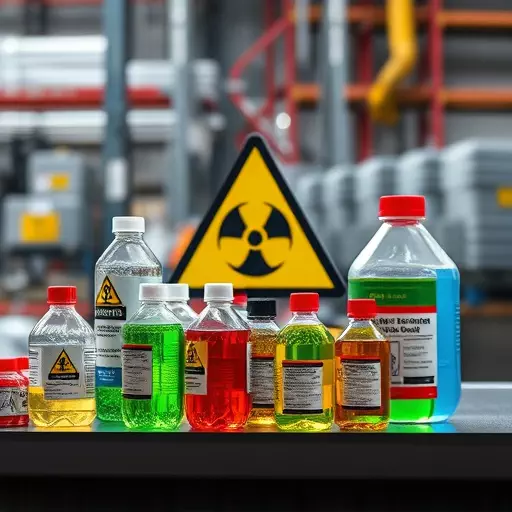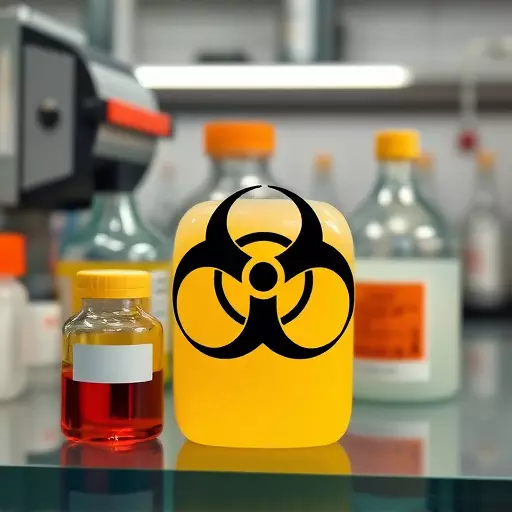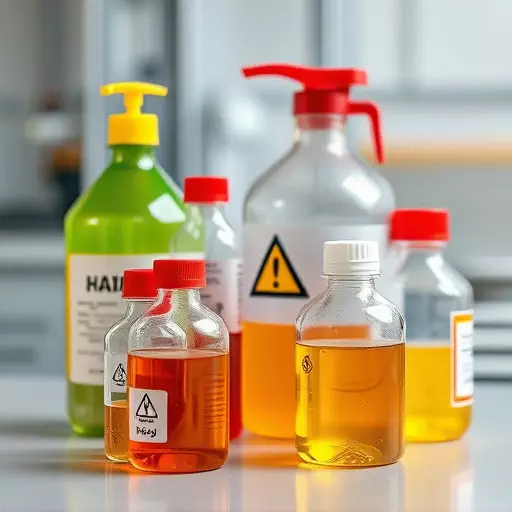In industrial settings, effective chemical exposure risk management through robust industrial hygiene protocols begins with hazardous material identification. This process involves advanced detection tools and trained personnel to assess health effects and implement control measures like PPE, engineering controls, and safe work practices. Regular monitoring, training, and employee education strengthen these protocols, fostering a safety-focused culture. By integrating these strategies, organizations can mitigate risks, ensure worker safety, protect the environment, and comply with regulations.
In light of the potential dangers posed by chemical exposure in industrial settings, understanding and implementing robust decontamination protocols is paramount. This article offers a comprehensive guide to effective risk management strategies, focusing on industrial hygiene protocols and hazardous material identification. We explore essential steps for worker protection, tools for accurate detection, and various decontamination methods. By delving into these topics, we aim to equip professionals with the knowledge needed to create safe environments while minimizing chemical exposure risks.
- Understanding Chemical Exposure Risks: A Comprehensive Overview
- Industrial Hygiene Protocols: Essential Steps for Worker Protection
- Identifying Hazardous Materials: Tools and Techniques for Accurate Detection
- Decontamination Methods: Effective Strategies for Safe Environments
- Personal Protective Equipment (PPE): Selecting the Right Gear for Chemical Safety
- Air and Surface Sampling: Monitoring Exposure Levels and Contaminants
- Best Practices for Implementing and Maintaining Decontamination Protocols
Understanding Chemical Exposure Risks: A Comprehensive Overview

Understanding Chemical Exposure Risks is a critical step in implementing effective decontamination protocols. Industrial hygiene protocols must account for various types of chemical exposure, from low-level chronic exposure to acute high-risk scenarios. Hazardous material identification is the first line of defense; knowing which chemicals are present and their potential health impacts is essential for managing risks. Once identified, these materials require specialized handling and decontamination procedures to ensure worker safety and environmental protection.
Chemical exposure risk management involves a comprehensive approach that includes monitoring air quality, personal protective equipment (PPE), engineering controls, and safe work practices. Regular training and education for employees are vital to fostering a culture of industrial hygiene. By understanding the specific risks associated with their tasks and the chemicals they handle, workers can actively participate in minimizing exposure, making them a key component in maintaining a safe work environment.
Industrial Hygiene Protocols: Essential Steps for Worker Protection

Industrial Hygiene protocols are a crucial component of managing chemical exposure risks in industrial settings. These protocols serve as a comprehensive framework to ensure worker safety and health by mitigating the potential dangers associated with hazardous materials. The first step involves identifying all sources and types of chemicals present in the work environment, a process known as hazardous material identification. This is a meticulous task that requires skilled professionals to conduct thorough inspections and analyze chemical inventory records.
Once identified, each chemical substance must be evaluated for its potential health effects and exposure limits. This data-driven approach allows for the implementation of appropriate control measures, such as engineering controls (e.g., ventilation systems), personal protective equipment (PPE), and safe work practices. Regular monitoring and training programs reinforce these protocols, fostering a culture of safety among workers and ensuring adherence to best practices in chemical exposure risk management.
Identifying Hazardous Materials: Tools and Techniques for Accurate Detection

Identifying Hazardous Materials is a critical step in mitigating risks associated with chemical exposure. Professionals rely on a combination of specialized tools and techniques to accurately detect these substances, ensuring adherence to robust industrial hygiene protocols. One such tool is advanced detection devices that employ sensors to identify gases, vapours, or particles indicative of hazardous materials. These devices offer real-time data, enabling swift action during an emergency.
Furthermore, trained personnel utilize scientific methods for manual sampling and analysis. This involves collecting samples from the air, surfaces, or affected areas and using laboratory techniques like gas chromatography-mass spectrometry (GC-MS) to identify the presence of specific chemicals. By integrating these tools and techniques, organizations can effectively manage chemical exposure risk, ensuring a safer working environment through comprehensive hazardous material identification practices.
Decontamination Methods: Effective Strategies for Safe Environments

Decontamination methods play a pivotal role in mitigating chemical exposure risks and ensuring safe environments, especially in industrial settings. Effective decontamination strategies involve a multi-faceted approach that begins with proper hazardous material identification. This initial step is crucial for understanding the nature of the risk and implementing tailored decontamination techniques. For instance, different chemicals require specific protocols, ranging from neutralization processes to containment and waste management.
Industrial hygiene protocols guide these procedures, focusing on minimizing employee exposure while protecting both workers and the broader community. This involves donning appropriate personal protective equipment (PPE), utilizing specialized ventilation systems, and employing safe disposal methods for contaminated materials. By integrating these decontamination strategies into risk management plans, organizations can create robust safety measures that prevent chemical accidents, promote healthy work environments, and adhere to legal obligations regarding hazardous material handling.
Personal Protective Equipment (PPE): Selecting the Right Gear for Chemical Safety

Personal Protective Equipment (PPE) plays a pivotal role in mitigating chemical exposure risk management. The right PPE is essential for industrial hygiene protocols, ensuring workers are shielded from hazardous materials identified during safety assessments. Selection of PPE should be based on an understanding of the specific chemicals handled and their potential health effects. For instance, chemical-resistant gloves, protective suits, respirators, and eye gear may be necessary depending on the substance.
Properly fitted PPE acts as a crucial barrier between workers and harmful substances, reducing the risk of skin absorption, inhalation, or accidental ingestion. It’s not just about donning any equipment; training is vital to ensure personnel understand when, how, and why they wear each component. This knowledge instills a sense of accountability in adhering to industrial hygiene best practices, fostering a culture of safety within facilities managing hazardous materials.
Air and Surface Sampling: Monitoring Exposure Levels and Contaminants

Air and Surface Sampling play a pivotal role in effective chemical exposure risk management. By collecting samples from both air and surfaces within an affected area, industrial hygiene professionals can accurately monitor and quantify levels of hazardous materials present. This data is crucial for evaluating potential risks to worker health and safety, as well as for guiding appropriate decontamination strategies.
Through the use of specialized equipment, such as air samplers and swabbing tools, samples are collected and analyzed to detect even trace amounts of harmful chemicals. This comprehensive monitoring allows for a more precise understanding of the scope of chemical exposure, enabling more targeted and effective industrial hygiene protocols.
Best Practices for Implementing and Maintaining Decontamination Protocols

Implementing and maintaining effective decontamination protocols is paramount in managing chemical exposure risk. Start by establishing clear, comprehensive procedures tailored to your specific industrial hygiene needs. These should include detailed steps for hazardous material identification, personal protective equipment (PPE) donning and doffing, and cleaning methods suitable for various surfaces and contaminants. Regular training sessions for all staff involved ensure everyone understands their role and responsibilities.
Consistency is key. Enforce adherence to these protocols by integrating them into daily operations and conducting periodic audits. Use signage and reminders to reinforce best practices, especially in high-risk areas. Keep records of all decontamination activities, including dates, methods used, and any observations or incidents, to continuously improve your risk management strategies.


